The James Madison class, comprising ten nuclear-powered ballistic missile submarines (SSBNs), evolved from the Lafayette class with an initial design modification to accommodate the Polaris A-3 instead of the A-2 missile. This class, completed in 1963-64, led the way for the subsequent Benjamin Franklin class.
| James Madison class SPECIFICATIONS | |
|---|---|
| Length: | 425 ft (129.57 m) |
| Height: | 32 ft (9.75 m) |
| Width: | 33 ft (10.06 m) |
| Weight: | 7,320 tons surfaced 8,240 tons submerged |
| Armament: | 16 steam ejection tubes for Polaris, Poseidon & Trident missiles and four 21-inch torpedo tubes |
| Speed: | 21 knots on the surface 16 knots submerged |
| Powerplant: | Single S5W pressurized water nuclear reactor |
| Crew complement: | 147 men; 15 officers, 132 enlisted |
| Contractors: | General Dynamics Electric Boat Division, Mare I NSYd, Newport News, Portsmouth NSYd |
| Names of submarines: | (627) James Madison, (628) Tecumseh, (629) Daniel Boone, (630) John C. Calhoun, (631) Ulysses S. Grant, (632) Von Steuben, (633) Casimir Pulaski, (634) Stonewall Jackson, (635) Sam Rayburn, (636) Nathanael Greene |
Description
Design
The James Madison class adopted the SCB-216 design similar to the 616 Class, exhibiting a hull length of 425 feet, a beam of 33 feet, and a draft of 32 feet.
Its surface and submerged displacements escalated to 7,320 and 8,240 tons respectively, primarily due to equipment and machinery modifications inspired by the unfortunate USS Thresher accident. Crew accommodations saw an increase for two additional enlisted men, totaling 132, while the officer count remained constant at fifteen.
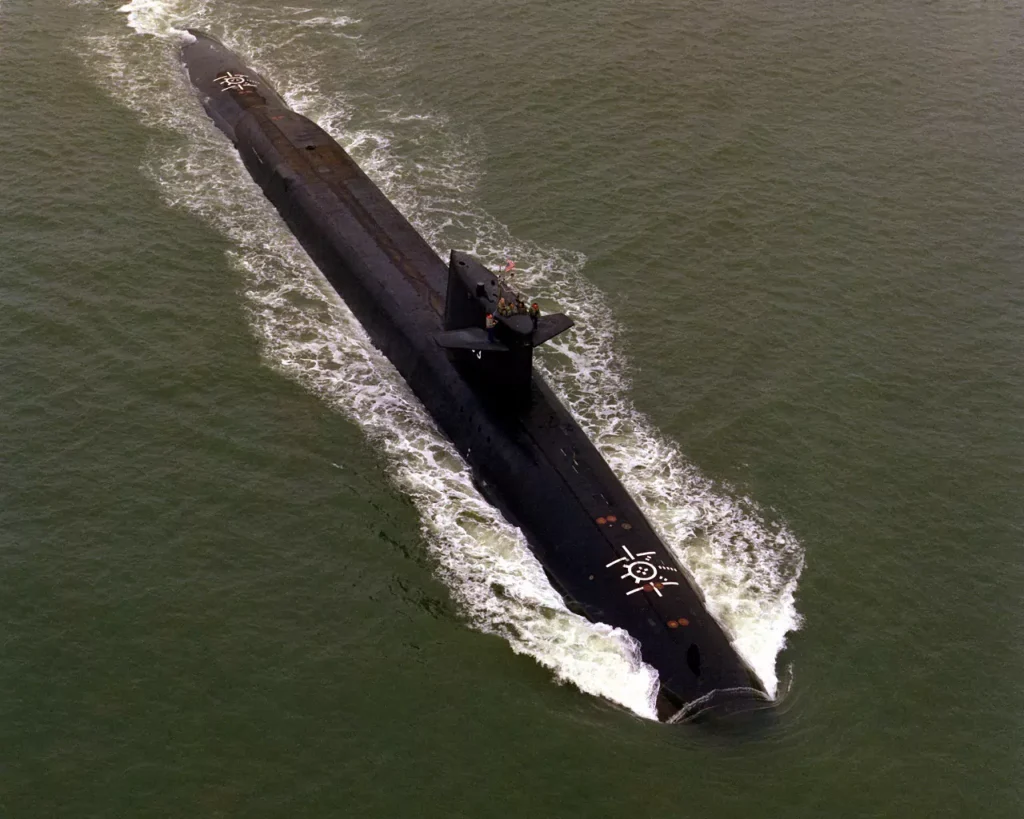
Mirroring the 616 and 627 classes, it sustained a rated speed of over 20 knots when submerged and could dive beyond 400 feet, courtesy of its Thresher hull design.
Following the tragic loss of the USS Thresher off the New England coast during a deep dive test in April 1963, safety protocols were amplified in the construction of the 627 and subsequent classes. The U.S. Navy and submarine builders took this step to prevent a recurrence of such a calamity.
Missiles
The 627 Class submarines were initially equipped with the Polaris A-3 missile system.
From March 1971 to April 1972, they got upgraded with the Poseidon C-3 missile system and the Mark 88 fire control system during their first overhaul.
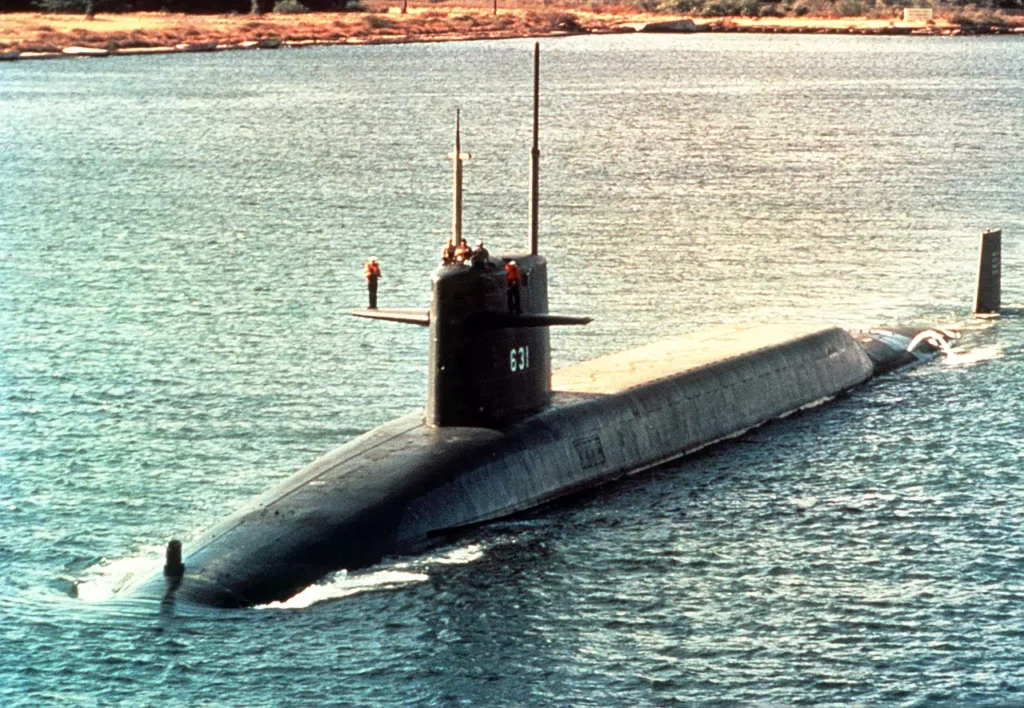
Between October 1979 and February 1982, submarines like USS Daniel Boone, USS John C. Calhoun, and USS Stonewall Jackson were updated with the Trident I C-4 missile system.
The same system was installed in the USS James Madison, USS Von Stuben, and USS Casimir Pulaski during their regular overhaul periods, with Daniel Boone becoming operational with the new missiles on September 6, 1980. However, USS Tecumseh, USS Ulysses S. Grant, USS Sam Rayburn, and USS Nathanael Greene didn’t receive the Trident upgrade.
Propulsion
The 627 Class used the same power source as the Lafayette, Ethan Allen, and George Washington Class ships, the Westinghouse S5W water-cooled reactor.
This reactor created 15,000 shaft horsepower, giving energy to the two geared turbines that turn a single seven-bladed propeller.
Torpedoes
The 627 Class was equipped with four Mark 65 torpedo tubes, which held Mark 48 multi-use torpedoes.
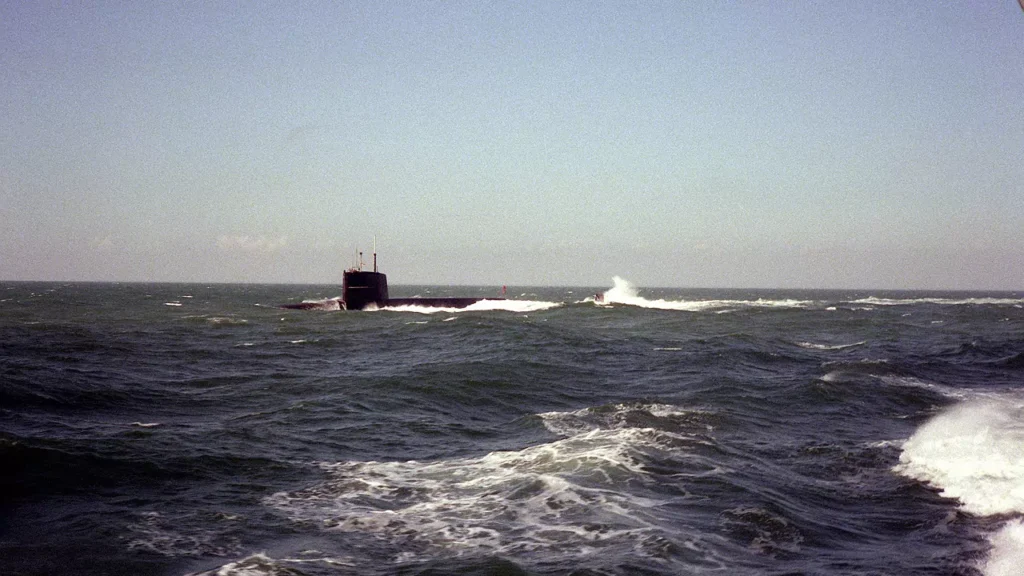
These Mark 48 torpedoes could be controlled by wires or function on their own using active/passive tracking. They could travel more than twenty-three miles and dive deeper than 3,000 feet. Each Mark 48 torpedo weighed 3,520 pounds and carried a 650-pound explosive.
The Mark 113 Mod 9 system was used to control the firing of the torpedoes.
Navigation
The James Madison Class, following the Lafayette Class, used the Mk 2 Mod 4 Ships Inertial Navigation System (SINS). The 608 Class was equipped with the Mod 3 version, while the 616 Class used the Mod 6 version. All of these submarines had a satellite receiver to get exact navigation details.
Construction
On July 19, 1961, six months after accelerating the Lafayette program, President Kennedy approved the construction of 10 enhanced Lafayette submarines, named the James Madison class.
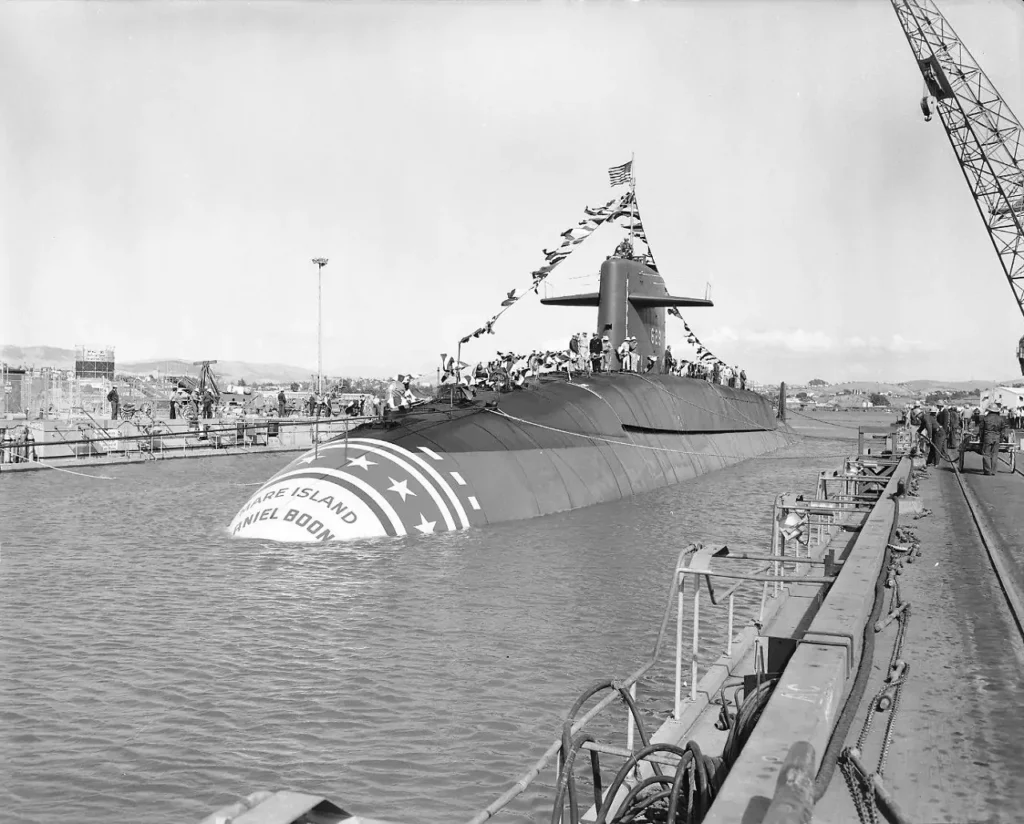
The building of the first submarine, USS Daniel Boone, started on February 6, 1962. These submarines, marked as the 20th through 29th SSBN, were built using the BUSHIPS submarine design SCB-216 Mod 3.
| No. | Name | Builder | Keel Laid | Launched | Comm. |
|---|---|---|---|---|---|
| SSBN 627 | James Madison | Newport News | 5 Mar 1962 | 15 Mar 1963 | 28 Jul 1964 |
| SSBN 628 | Tecumseh | Electric Boat | I Jun 1962 | 22 Jun 1963 | 29 May 1964 |
| SSBN 629 | Daniel Boone | Mare I NSYd | 6 Feb 1962 | 22 Jun 1963 | 23 Apr 1964 |
| SSBN 630 | John C. Calhoun | Newport News | 14 Jun 1962 | 22 Jun 1963 | 15 Sep 1964 |
| SSBN 631 | Ulysses S. Grant | Electric Boat | 18 Aug 1962 | 2 Nov 1963 | 17 Jul 1964 |
| SSBN 632 | Von Steuben | Newport News | 4 Sep 1962 | 18 Oct 1963 | 30 Sep 1964 |
| SSBN 633 | Casimir Pulaski | Electric Boat | 12 Jan 1963 | 1 Feb 1964 | 14 Aug 1964 |
| SSBN 634 | Stonewall Jackson | Mare I NSYd | 4 Jul 1962 | 30 Nov 1963 | 26 Aug 1964 |
| SSBN 635 | Sam Rayburn | Newport News | 3 Dec 1962 | 20 Dec 1963 | 2 Dec 1964 |
| SSBN 636 | Nathanael Greene | Portsmouth NSYd | 21 May 1962 | 12 May 1964 | 19 Dec 1964 |
Service
The USS Daniel Boone, the first James Madison class submarine to be commissioned, was launched on June 22, 1963, and commissioned on April 23, 1964. A month later, it became the first U.S. FBM to visit Hawaii.
By August, it was based at Apra Harbor, Guam, and started its first deterrent patrol on December 25, 1964.
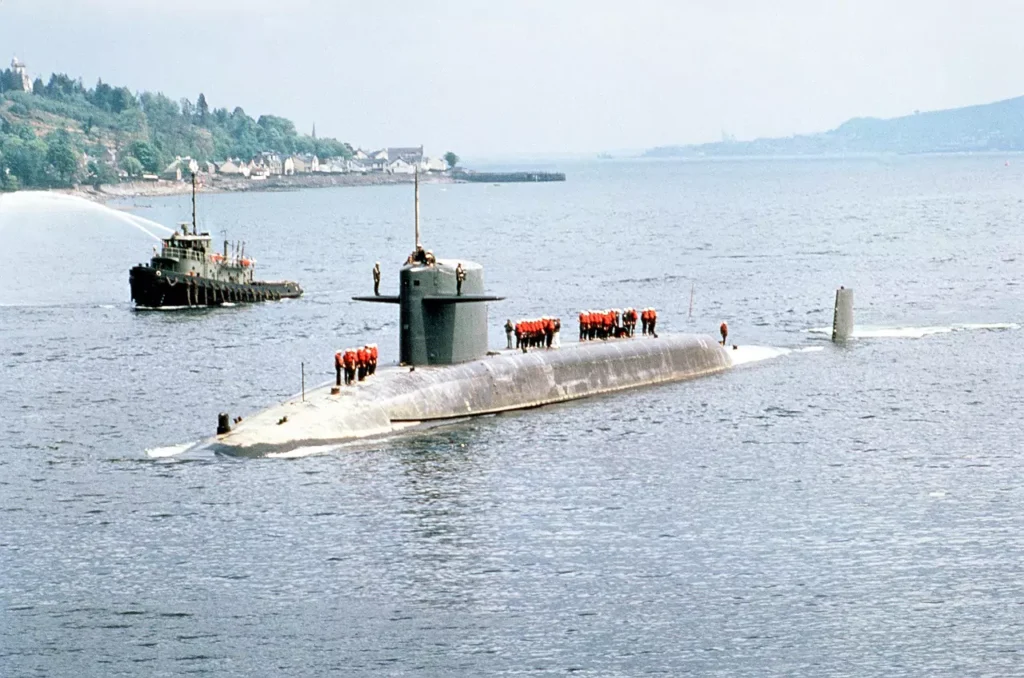
Of the James Madison class, four submarines, including Daniel Boone, Tecumseh, Ulysses S. Grant, and Stonewall Jackson, served in the Pacific, while the others were based in the Atlantic.
This arrangement changed with the deployment of Poseidon missiles in March 1971, leading to the transfer of the Pacific-based Lafayette submarines to the Atlantic fleet. By April 1972, Poseidon’s deployment in this class was complete.
In the following table, the details of the conversion to Poseidon are shown:
| No. | FY Program | Conversion Yard | Start | Complete |
|---|---|---|---|---|
| SSBN 627 | 1968 | Electric Boat | 3 Feb 1969 | 28 June 1970 |
| SSBN 628 | 1970 | Newport News | 10 Nov 1969 | 18 Feb 1971 |
| SSBN 629 | 1968 | Newport News | 11 May 1969 | 11 Aug 1970 |
| SSBN 630 | 1969 | Mare I NSYd | 4 Aug 1969 | 22 Feb 1971 |
| SSBN 631 | 1970 | Puget Sound NSYd | 3 Oct 1969 | 16 Dec 1970 |
| SSBN 632 | 1969 | Electric Boat | 11 July 1969 | 19 Nov 1970 |
| SSBN 633 | 1970 | Electric Boat | 10 Jan 1970 | 30 Apr 1971 |
| SSBN 634 | 1971 | Electric Boat | 15 July 1970 | 29 Oct 1971 |
| SSBN 635 | 1970 | Portsmouth NSYd | 19 Jan 1970 | 2 Sep 1971 |
| SSBN 636 | 1971 | Newport News | 22 July 1970 | 21 Sep 1971 |
On September 6, 1980, eight years post Poseidon conversion, USS Daniel Boone became the first Madison class sub to operate with the Trident I missile, followed by Stonewall Jackson and John C. Calhoun in November.
The James Madison, the Von Steuben, and the Casimir Pulaski received the same upgrade during their second overhaul, completed on June 3, 1983.
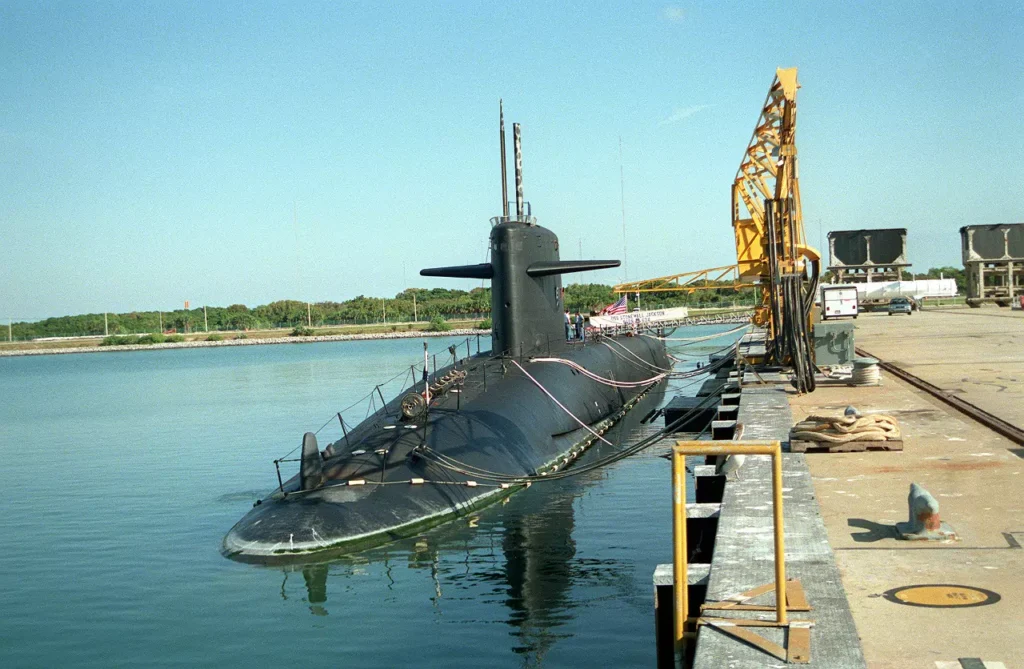
After this re-arming, these submarines moved from Rota, Spain, to Kings Bay, Georgia. All Trident I-converted 627 Class FBMs were stationed at Kings Bay Naval Submarine Base, Georgia.
However, for missile loading or unloading, they had to sail to Charleston, S.C., the Atlantic Coast’s Polaris and Trident I missile handling facility. Kings Bay, Georgia, was the Atlantic Coast Strategic Weapons Facility (SWFLANT) for the Trident II D-5 missile system.
Decommission
In April 1986, the USS Nathanael Greene was grounded in the Irish Sea, sustaining damages that were deemed too extensive for repair, leading to the decision to decommission it.
By March 1987, both the Nathanael Greene and the Sam Rayburn had been taken out of service, with the latter being converted into the first moored training ship (MTS 635) after deactivation and decommissioning.
| No. | Name | Decomm. | Striken | Broken up |
|---|---|---|---|---|
| SSBN 627 | James Madison | 20 Nov 1992 | 20 Nov 1992 | 1997 |
| SSBN 628 | Tecumseh | 23 Jul 1993 | 23 Jul 1993 | 1994 |
| SSBN 629 | Daniel Boone | 18 Feb 1994 | 18 Feb 1994 | 1994 |
| SSBN 630 | John C. Calhoun | 28 Mar 1994 | 28 Mar 1994 | 1994 |
| SSBN 631 | Ulysses S. Grant | 12 Jun 1992 | 12 Jun 1992 | 1993 |
| SSBN 632 | Von Steuben | 26 Feb 1994 | 26 Feb 1994 | 2001 |
| SSBN 633 | Casimir Pulaski | 7 Mar 1994 | 7 Mar 1994 | 1994 |
| SSBN 634 | Stonewall Jackson | 9 Feb 1995 | 9 Feb 1995 | 1995 |
| SSBN 635 | Sam Rayburn | 31 Jul 1989 | 31 Jul 1989 | - |
| SSBN 636 | Nathanael Greene | 15 Dec 1986 | 31 Jan 1987 | 2001 |
In compliance with the joint U.S./Soviet START Treaty, the USS Tecumseh and the USS Ulysses S. Grant were slated for deactivation by July 1992. By December 1993, Tecumseh, Daniel Boone, John C. Calhoun, Casimir Pulaski, and Stonewall Jackson were placed on stand-down status.
The remaining members of the James Madison class continued to serve but were gradually retired as the newer Ohio Class FBMs were commissioned and started their deterrent patrols at Kings Bay.
Further reading
Bibliography
- Polmar, N., Moore, K. J. (2014). Cold War Submarines: The Design and Construction of U.S. and Soviet Submarines. United States: Potomac Books, Incorporated.
- Polmar, N. (1993). The Naval Institute Guide to the Ships and Aircraft of the U.S. Fleet, 15th Edition. United States: Naval Institute Press.
- Gibson, J. N. (1996). Nuclear Weapons of the United States: An Illustrated History. United States: Schiffer Publishing.
- Adcock, A. (1993). U.S. Ballistic Missile Subs in Action. United States: Squadron/Signal Publications.
- Friedman, N. (1995). U.S. submarines through 1945: an illustrated design history. United States: Naval Institute Press.